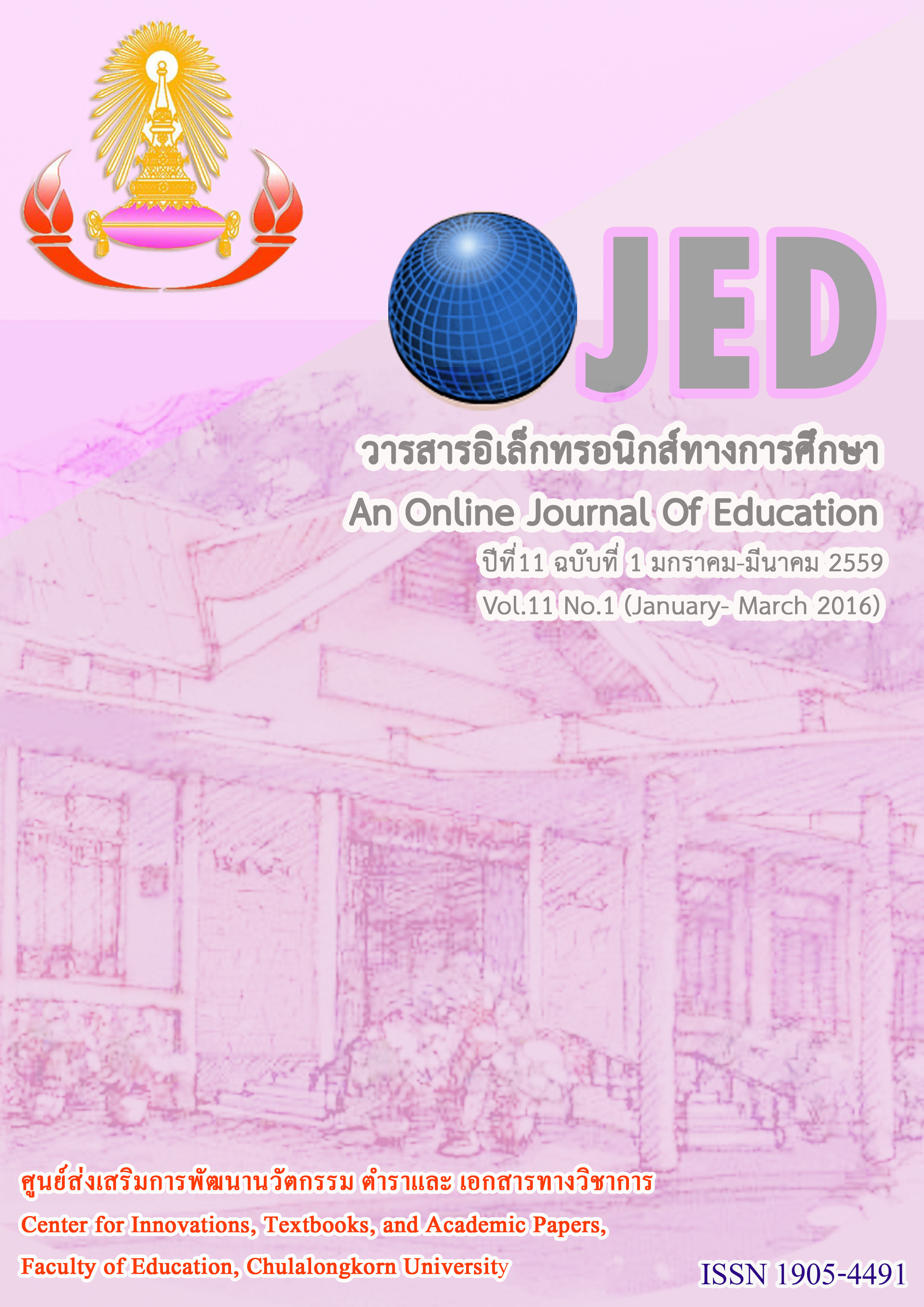ผลของการจัดกิจกรรมการเรียนรู้คณิตศาสตร์ตามรูปแบบวงล้อการคิดอย่างกระตือรือร้น ในบริบทเชิงสังคมและปัญหาปลายเปิดที่มีต่อความสามารถในการแก้ปัญหา และการคิดสร้างสรรค์ทางคณิตศาสตร์ของนักเรียนระดับชั้นมัธยมศึกษาปีที่ 2 EFFECTS OF ORGANIZING MATHEMATICS LEARNING
Keywords:
วงล้อการคิดอย่างกระตือรือร้นในบริบทเชิงสังคม, ปัญหาปลายเปิด, ความสามารถในการแก้ปัญหาทางคณิตศาสตร์, ความสามารถในการคิดสร้างสรรค์ทางคณิตศาสตร์, THINKING ACTIVELY IN A SOCIAL CONTEXT WHEEL MODEL, OPEN–ENDED PROBLEM, MATHEMATICAL PROBLEM SOLVING ABILITY, MATHAbstract
การวิจัยครั้งนี้มีวัตถุประสงค์เพื่อ 1) เปรียบเทียบความสามารถในการแก้ปัญหาและการคิดสร้างสรรค์ทางคณิตศาสตร์ของนักเรียนชั้นมัธยมศึกษาปีที่ 2 ก่อนและหลังได้รับการจัดกิจกรรมการเรียนรู้คณิตศาสตร์ตามรูปแบบ วงล้อการคิดอย่างกระตือรือร้นในบริบทเชิงสังคมและปัญหาปลายเปิด และ 2) เปรียบเทียบความสามารถใน การแก้ปัญหาและการคิดสร้างสรรค์ทางคณิตศาสตร์ของนักเรียนชั้นมัธยมศึกษาปีที่ 2 ที่ได้รับการจัดกิจกรรมการเรียนรู้คณิตศาสตร์ตามรูปแบบวงล้อการคิดอย่างกระตือรือร้นในบริบทเชิงสังคมและปัญหาปลายเปิดกับการจัดกิจกรรม การเรียนรู้แบบปกติ กลุ่มตัวอย่างคือ นักเรียนชั้นมัธยมศึกษาปีที่ 2 ภาคเรียนที่ 2 ปีการศึกษา 2558 โรงเรียน เศรษฐบุตรบำเพ็ญ เป็นนักเรียนกลุ่มทดลองจำนวน 50 คน และนักเรียนกลุ่มควบคุมจำนวน 48 คน ผลการวิจัยพบว่า 1) นักเรียนที่ได้รับการจัดกิจกรรมการเรียนรู้คณิตศาสตร์ตามรูปแบบวงล้อการคิดอย่างกระตือรือร้นในบริบทเชิงสังคมและปัญหาปลายเปิดมีความสามารถในการแก้ปัญหาและการคิดสร้างสรรค์ทางคณิตศาสตร์หลังเรียนสูงกว่าก่อนเรียน อย่างมีนัยสำคัญทางสถิติที่ระดับ .05 และ 2) นักเรียนที่ได้รับการจัดกิจกรรมการเรียนรู้คณิตศาสตร์ตามรูปแบบวงล้อการคิดอย่างกระตือรือร้นในบริบทเชิงสังคมและปัญหาปลายเปิดมีความสามารถในการแก้ปัญหาและการคิดสร้างสรรค์ทางคณิตศาสตร์สูงกว่านักเรียนที่ได้รับการจัดกิจกรรมการเรียนรู้แบบปกติ อย่างมีนัยสำคัญทางสถิติที่ระดับ .05
The purpose of this research were: 1) to compare the mathematical problem solving and creative thinking abilities of grade eight grade students before and after being taught by using thinking actively in a social context wheel model and open-–ended problems, and 2) to compare the mathematical problem solving and creative thinking abilities of eighth grade students between the group being taught by using thinking actively in a social context wheel model and open-–ended problem and the group being taught by using a conventional approach. The subjects were eighth grade students in the second semester of the 2015 academic year at Setthabutbamphen school. There were 50 students in the experimental group and 48 students in the control group. The results of the study revealed that: 1) the mathematical problem solving and creative thinking abilities of eighth grade students after being taught by using thinking actively in a social context wheel model and open-–ended problems were statistically higher than those of the students before learning at the .05 level of significance, and 2) the mathematical problem solving and creative thinking abilities of eighth grade students being taught by using thinking actively in a social context wheel model and open-–ended problems were higher than those of the students being taught by using a conventional approach at the .05 level of significance.




